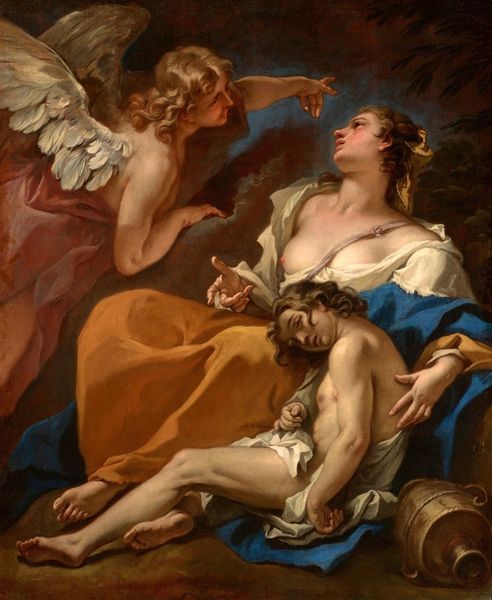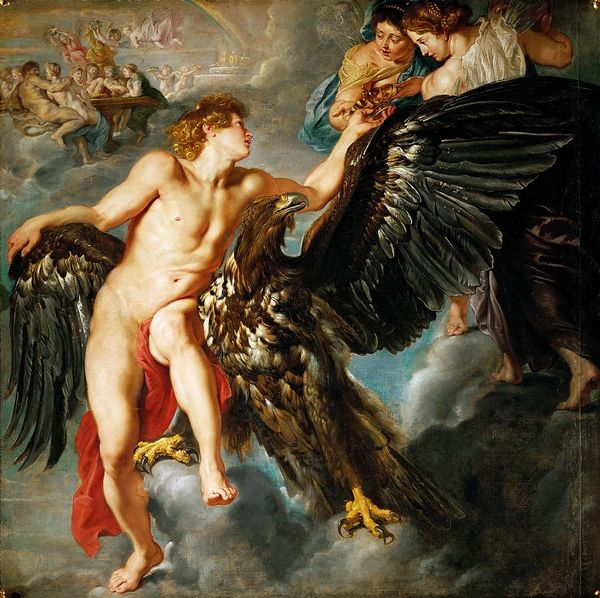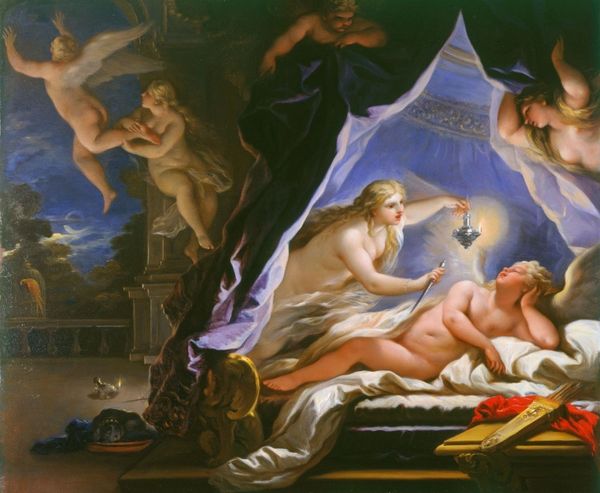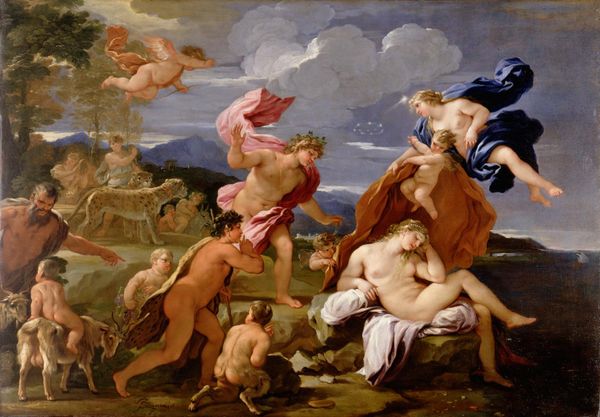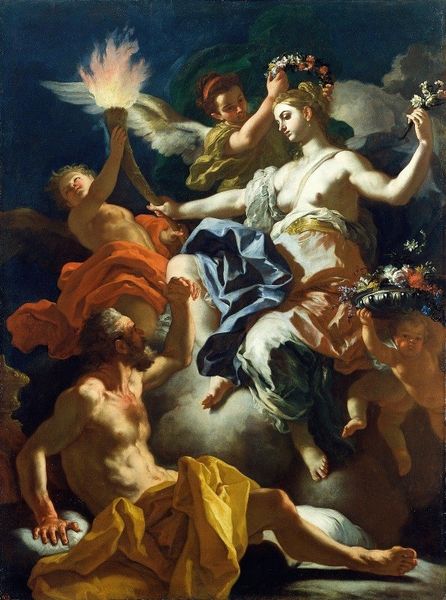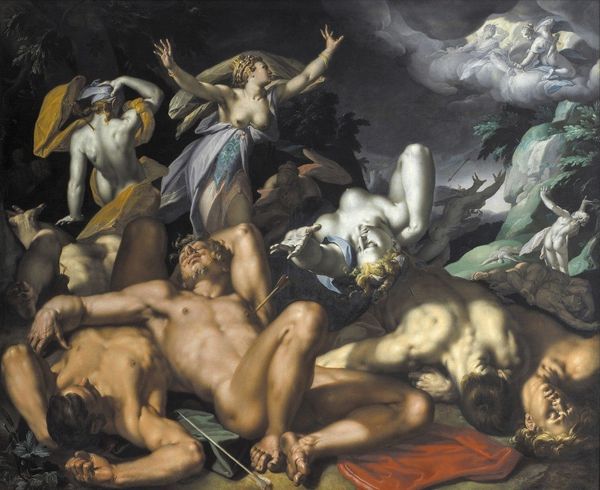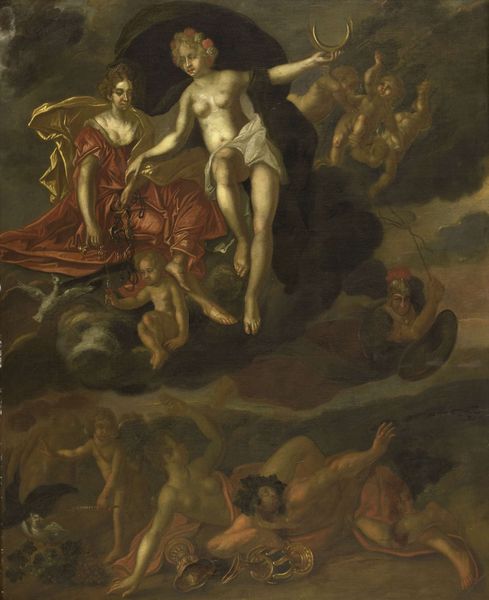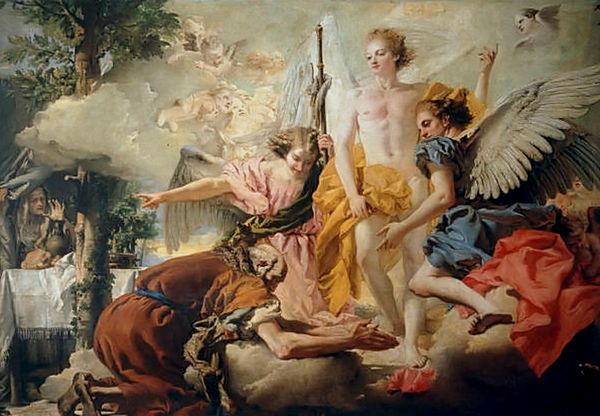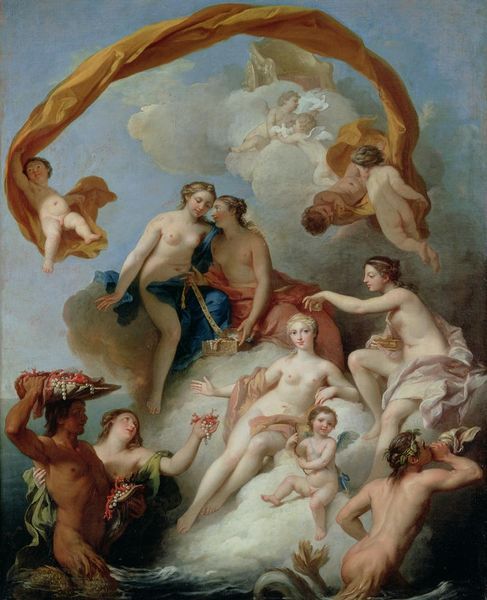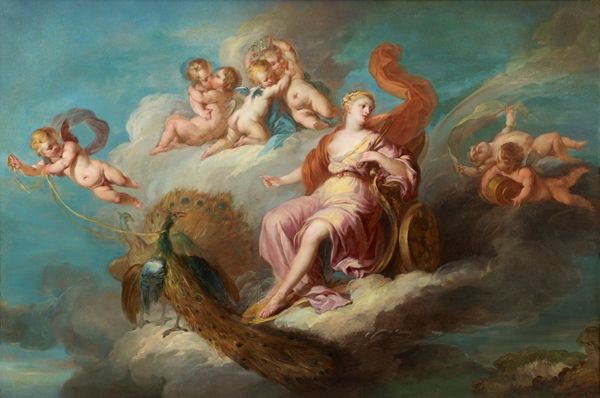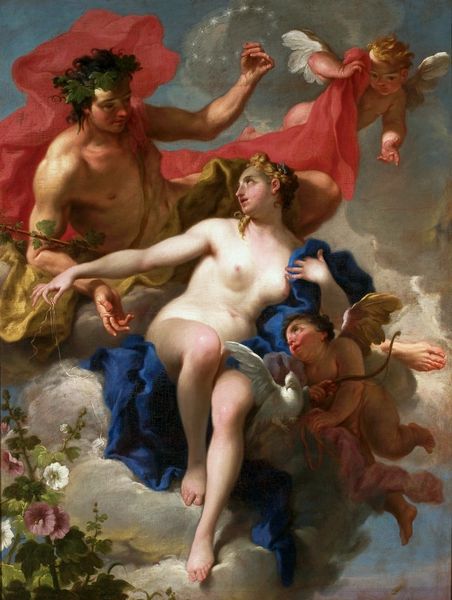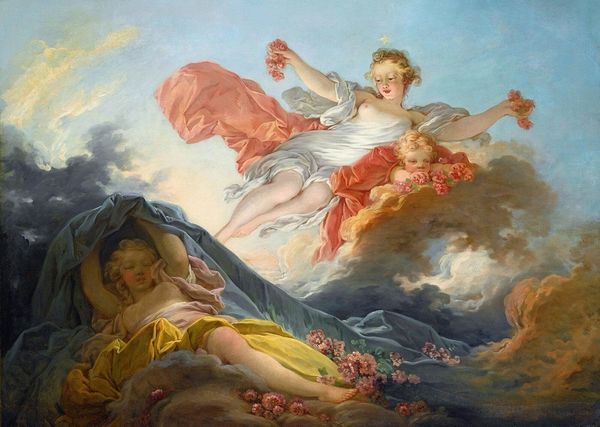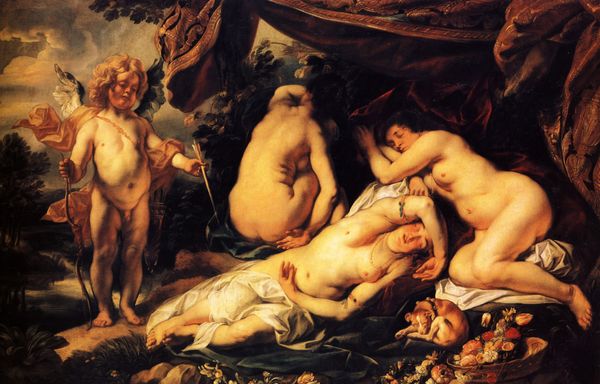
Copyright: Public domain
Curator: Looking at Luca Giordano’s “Cupid Visiting the Sleeping Psyche” from 1697, the overwhelming sensation is one of rich, dreamlike opulence. Editor: Yes, immediately the tactile quality strikes me— the luxurious drape of the fabric, the smooth flesh tones, even the metallic gleam of what looks like a telescope. It’s almost a study in contrasting textures, wouldn’t you say? Curator: Indeed! Giordano’s process with oil paint really captures the interplay between surface and depth. He’s skillfully layering paint to create a luminosity that accentuates both the sensuality of the mythological narrative and, I think, perhaps raises interesting questions of voyeurism in the treatment of the female form. Editor: I completely agree, and I’d add that it invites critical engagement with societal power dynamics embedded within classical myth. The figures floating above— are they active agents, or representations of fate, or even societal expectation brought to life by the subject of Psyche herself, lying passive? Curator: It’s intriguing to consider them as figments of her own subconscious, manifestations of the societal forces at play during the time of Giordano making this piece in late seventeenth-century Italy. What labor went into creating the pigment and grinding these colors? How does this piece fit within the economic and power structures of the day? Editor: Right! Beyond that individual moment though, what's communicated by a woman rendered vulnerable versus Cupid who intrudes— we are clearly presented a charged eroticism filtered through class and power. Even the Cupid himself looks caught between his desire, agency and sense of consequence for the pending violation! It sparks debate about consent, desire, and the male gaze that’s deeply relevant still. Curator: Well, on the surface this canvas offers a rich exploration of paint application and textural interplay, but considering its history allows the art historical world of both of our thinking to intersect. Editor: Exactly, It seems what this work does really well is that it prompts essential and really vital conversations.
Comments
No comments
Be the first to comment and join the conversation on the ultimate creative platform.
